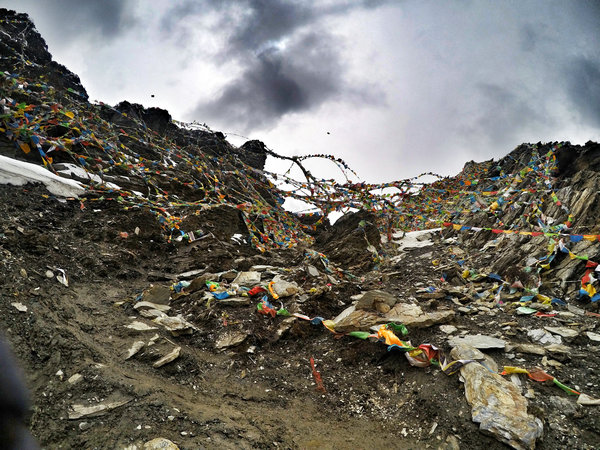Faster, stronger, higher, higher and higher
By Yang Feiyue ( China Daily ) Updated: 2016-05-14 11:51:44
"If you come from sea level it's very hard to prepare for this competition, but you can get here a bit early (a few days), and try to get a little bit used to the elevation," Croft says.
"As you are going up, getting high up to 4,600 meters, you just have to be really aware of yourself, just not push it, and take your time."
The event started off in Shangri-la town, part of Yading. The road was smooth at the beginning before turning sharply upward to 2,900 meters. Then, runners had to descend along a 3.5-kilometer mud track to 2,800 meters, where the real excitement began.
After passing Chitu river, runners came across a small village, and then ran 12 kilometers through forest and a rugged botanical zone along glaciers and rivers. The thrilling river track then gave way to a two-kilometer highway, when the Chonggu Temple suddenly appeared.
The most difficult part came in the final 4 kilometers where runners had to climb to 4,700 meters and double back to the temple to finish the race.
"The final section consists of icy slag and gravel and is extremely slippery," says Wei Xueyan, from Beijing, who is in her 30s, and who finished the race in seven hours and 45 minutes, ranking 14th in the women's group.
But those who reached the top of the climb were more than amply recompensed with the spectacular view.
"I felt so small when I reached the top right near the snow-capped peak, and it's amazing to see Marnyi stones carved with Tibetan words lying around there," Wei says.
Wei caught the cross-country running bug early last year as she did some running in mountainous areas while she was staying in her hometown in Yunnan province.
"Cross-country running is so much more interesting because the landscape never ceases to change, and you can stop and take photos."
Her running photos have become popular in her WeChat friends circle, which, in turn, has fueled her enthusiasm for cross-country running.
The Yading event impressed her, and what was particularly noticeable were the variations in track conditions, ranging from gravel to green moss, she said. Some roads were very soft, covered with thick leaves and mud, and some inclines had a gradient of 60 degrees, presenting a stiff challenge.
"It was particularly enjoyable to run along the narrow stone track along the edge of a mountain, with the river bubbling along right under your feet. The tracks featuring golden yellow leaves lying around were breathtaking."
Locals added to the event's charm, she says.
"The Tibetan people were so friendly, offering homemade food to runners who passed their houses. Men and children clapped and cheered us, which was a powerful stimulant to keep us going till the end."
Wei says she is also looking forward to similar cross-country events in Yumen, Gansu province, in September and Huangshan, Anhui, in January.
|
|
|
|
|
|
|
|


























 Raymond Zhou:
Raymond Zhou: Pauline D Loh:
Pauline D Loh: Hot Pot
Hot Pot Eco China
Eco China China Dream
China Dream China Face
China Face






